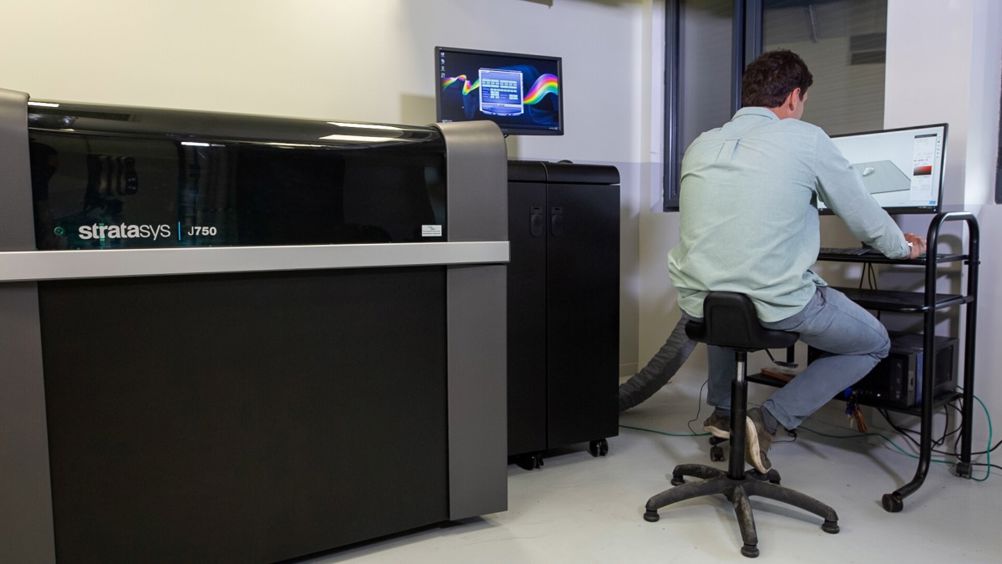Engineering has an image problem. Too many young people think it is dull and difficult, and unlikely to lead to fulfilling careers.
According to EngineeringUK, the not-for-profit careers body, this perception is causing a widening skills gap. One in five jobs in the UK is engineering-related. Yet, engineering vacancies account for one in four job adverts.
EngineeringUK also found that less than half of young people agreed or strongly agreed with the statement that ‘being an engineer fits well with who I am’. That’s a shame because engineering is one of the most stimulating disciplines imaginable. Those who study it solve problems and push boundaries. And sometimes, they go on to change the world.
So engineering is exciting - but we must do a better job of getting this message across. We urgently need to find ways of attracting more young people into the profession, so that they can go on to solve the challenges of tomorrow.
The power of project-based learning
How do we go about doing that? One answer is to improve the quality and diversity of engineering learning. There will always be a need for textbook-based study to understand the core principles of the subject. However, there is scope to introduce practical and hands-on activities that are more relatable to the world around us.
That’s where additive manufacturing comes in. Many academic institutions have introduced additive manufacturing into the curriculum to make courses more engaging. Investment in the latest machines also leads to new research opportunities, often in collaboration with other partners.
Crucially, access to additive manufacturing equipment lets students hone new skills. For instance, Design for Additive Manufacturing helps the next generation of engineers to think in new ways, unshackling them from the restrictions of the past. Young engineers get to explore new topologies, resulting in different shapes that cannot be produced with traditional subtractive methods.
This sort of ‘learning through doing’ is critical for the next generation of engineers. It increases engagement and commitment to the course and boosts employability, helping to instil highly transferable skills.
Additive manufacturing in engineering education
So, let’s look at examples of how additive manufacturing is used in academia - from schools and colleges to university departments and cutting-edge research laboratories.
At Lancaster University in the UK, researchers have used our products to develop advanced manufacturing techniques and explore the future of computer-aided design. The technologies have enabled teams to model complex objects with a high degree of optimisation. This approach can revolutionise design possibilities, including the development of shape-shifting materials and 4D printing.
Meanwhile, at Cambridge University, the 3D Printing Society is a student-led group focused on advancing the use of additive manufacturing across various disciplines. With access to Stratasys 3D printers, society members engage in various complex engineering projects. Notable examples of their work include collaborating with REMAP to create a 3D-printed component for a robotic archery turret for paralysed children, and working with Open Bionics to develop prosthetic hands for amputees.
Interestingly, additive manufacturing has also moved from traditional areas such as engineering and manufacturing into exciting new applications such as science and medicine. Here, 3D printers are also being deployed to inspire academic-based innovation.

For instance, at Bordeaux University Hospital in France, Stratasys J750 3D printers are deployed to produce full-colour, multi-material 3D-printed models for surgical planning. These models allow surgeons to plan complex kidney tumour removals with greater accuracy, improving the success rate of these types of surgeries.
How collaboration drives better learning outcomes
So, there is a lot of exciting activity underway. Stratasys, for its part, has been working with academia in several ways to ensure that students and educators benefit from AM.
Firstly, it collaborates with partners to take machines into educational environments for ‘show-and-tell’ sessions. Here, students get to see the machines up close, learning about the broad range of additive manufacturing techniques while also understanding new materials and software.
We can also help educators build the curriculum by creating certified programmes for education. This activity ensures content is engaging and accessible. Free to educators and students, in-depth lectures provide students with hands-on training to get immersed in the what, why and how of 3D printing.
Stratasys is also committed to supporting the most state-of-the-art research laboratories, providing access to customised training, advanced materials and technical support.
Committed to academic excellence
In conclusion, project-based learning is the key to academic success. When students learn something and then put it into action, it sticks.
By working with schools, colleges, universities and research laboratories, we can cement the role of additive manufacturing as an exciting solution to the challenges of tomorrow.

Jesse Roitenberg is an education specialist at Stratasys











McMurtry Spéirling defies gravity using fan downforce
Ground effect fans were banned from competitive motorsport from the end of the 1978 season following the introduction of Gordon Murray's Brabham...